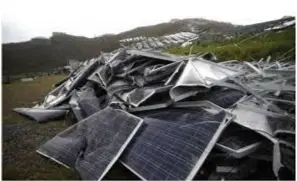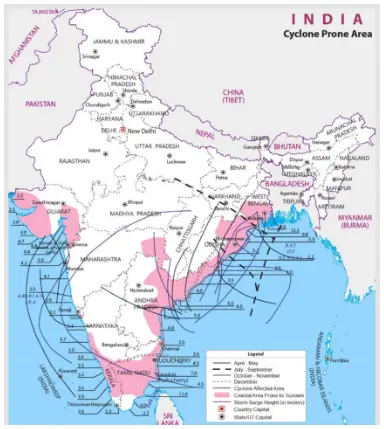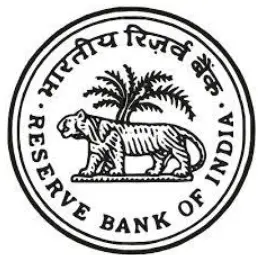Saturday, 6th April 2024
Africa at Centre of India’s Vision for Global South
In News: The heightened focus on Africa by India has been underscored during numerous official visits. This transition holds considerable importance as it mirrors India's rising prominence as a significant global player, offering a platform to advocate for the concerns of the Global South.
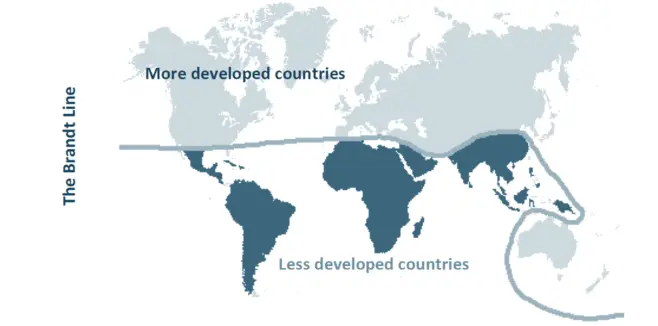
India's Vision for the Global South
- Giving Voice to Developing Countries
- Initiatives like the "Voice of Global South Summit" aim to amplify the concerns of developing nations at international forums such as the G20.
- Advocacy and Reform in Global Institutions
- India advocates for reforms in global organizations to better represent the interests of developing countries, particularly in areas such as international taxation and climate finance.
- Promotion of South-South Cooperation
- India shares best practices, technologies, and resources among developing nations through initiatives like the India-UN Development Partnership Fund.
- Climate Change Mitigation Efforts
- India collaborates with other nations, particularly in Asia, Africa, and Latin America, to address climate change through initiatives like the International Solar Alliance.
Benefits of Prioritizing Africa in India's Global South Vision
- Economic Opportunities
- Africa offers significant economic potential for India, with increasing investments and trade relations.
- Strategic Partnerships
- Enhanced ties with Africa strengthen India's influence in global forums and contribute to inclusive global governance.
- Utilizing Youth Demographics
- Collaboration with Africa's young population presents opportunities for educational and technological advancements.
- Resource Collaboration
- Collaboration with Africa on critical minerals and renewable energy resources can drive innovation and sustainable development.
- Geopolitical Influence
- Stronger partnerships with African nations enhance India's strategic standing on the world stage and help balance global power dynamics.
Challenges for India as a Leader in the Global South
- Internal Development Issues
- Critics argue India should address domestic issues like unequal wealth distribution and inadequate infrastructure before leading other developing nations.
- Diverse Needs and Priorities
- Balancing the diverse needs and priorities of different countries within the Global South can be challenging.
- Balancing Global Partnerships
- Maintaining strong economic ties with developed nations may conflict with advocating for the interests of the Global South.
- Credibility on Climate Change
- India's position as a major emitter of CO2 weakens its stance when advocating for stricter climate action within the Global South.
Way Forward for India's Global South Leadership
- Frugal Tech Innovation
- Leveraging India's expertise in frugal innovation to develop scalable solutions for common challenges in the Global South.
- Rotating Leadership Council
- Championing a rotating leadership council with representation from different regions within the Global South to foster collaboration and inclusivity.
- Global South Satellite Network
- Leading the development of a network of low-cost satellites to provide essential data and services for areas lacking traditional infrastructure.
- South-South Vocational Training Centers
- Establishing vocational training centers across the Global South to equip individuals with skills relevant to local economies.
|
UPSC Previous Year Questions Prelims (2020) Q. In which one of the following groups are all the four countries members of G20? (a) Argentina, Mexico, South Africa and Turkey (b) Australia, Canada, Malaysia and New Zealand (c) Brazil, Iran, Saudi Arabia and Vietnam (d) Indonesia, Japan, Singapore and South Korea Ans: (a) Mains (2019) Q. ‘The long-sustained image of India as a leader of the oppressed and marginalised nations has disappeared on account of its new found role in the emerging global order.’ Elaborate. |
Source: IE
State Authority to Impose Excise Duty on Industrial Alcohol?
In News: Recently a 9-Judge Constitution Bench proceeded with its second day of deliberations on whether industrial alcohol falls within the scope of 'intoxicating liquor' under the legislative authority of state governments.
Understanding Excise Duty
- Definition and Application
- Excise duty is a tax levied on goods during their production, licensing, and sale, paid indirectly to the Government of India by producers.
- It applies to domestically manufactured goods, in contrast to Customs duty which is imposed on imported goods.
- Evolution with GST
- With the implementation of Goods and Services Tax (GST) in July 2017, many types of excise duty were subsumed, leaving it applicable only to petroleum and liquor.
- Excise Duty on Alcohol
- Excise duty on alcohol is a significant revenue source for states, often augmented by additional duties imposed on alcohol consumption.
Controversy Surrounding Industrial Alcohol Excise Duty
- Jurisdictional Debate
- A Supreme Court bench is deliberating whether states have the authority to regulate and tax industrial alcohol, primarily used as a raw material rather than for human consumption.
- Constitutional Provisions
- Entry 8 in the State List grants states power over intoxicating liquors, while Entry 52 of the Union List allows the Centre control over certain industries.
- Past Precedent
- In the Synthetics & Chemicals Ltd v. State of Uttar Pradesh case (1989), the Supreme Court limited states' power to regulate intoxicating liquors, differentiating them from industrial alcohol.
Arguments and Perspectives
- State's Viewpoint
- States argue that intoxicating liquors encompass all alcohol-containing liquids, and the Centre's control does not extend to finished products like denatured industrial alcohol.
- Potential Impact
- Experts caution against diminishing state powers, citing previous court rulings emphasizing the autonomy of states and the need to preserve their authority.
Conclusion
- Upholding State Powers
- The Supreme Court's decision holds implications for the balance of power between the Centre and states, emphasizing the need to maintain states' constitutional authority.
Source: LL
Crop Diversification
In News: In recent years, districts bordering Bangladesh in West Bengal have undergone a notable transformation in their agricultural practices, marked by a shift towards crop diversification.

Reasons Behind the Shift from Wheat Production
- Wheat Blast Disease
- The outbreak of wheat blast disease in Bangladesh in 2016 prompted a two-year ban on wheat cultivation in border areas of West Bengal, driving farmers to seek alternative crops.
- Wheat blast disease, caused by the fungus Magnaporthe oryzae Triticum (MoT), leads to significant yield losses.
- Economic Viability
- Farmers are opting for alternative crops like bananas due to their profitability during peak seasons, stagnant wheat prices, and concerns over water consumption.
- Shift to Higher Output Crops
- Maize cultivation has surged, with production increasing eightfold from 2011 to 2023, driven by higher per-hectare output and demand from poultry and food processing industries.
- Pulses and oilseeds production in the region has also seen a notable increase.
India's Need for Crop Diversification
- Understanding Crop Diversification
- Crop diversification involves growing a variety of crops instead of focusing solely on one crop, aiming to promote sustainable agriculture.
- Benefits of Crop Diversification
- Risk Reduction: Diversifying crops can mitigate risks in regions prone to drought by ensuring some level of harvest despite adverse conditions.
- Soil Health Improvement: Planting leguminous crops can enhance soil fertility, benefiting subsequent crops.
- Market Opportunities: Crop diversification can tap into niche markets and emerging trends, such as the rising demand for organic produce.
- Pest and Disease Management: Intercropping can help manage pests and diseases, reducing the need for chemical pesticides.
- Source of Biofuels: Certain crops can serve as potential sources for biofuel production, offering additional income opportunities for farmers.
Concerns
- Market Risks and Limited Opportunities: Farmers may be hesitant to switch from established crops due to fluctuating market prices and limited demand.
- Financial Constraints: Adopting crop diversification may require additional investment, posing challenges for smallholder farmers.
- Lack of Infrastructure and Storage: Perishable diversified crops may require specialized storage and transportation facilities.
- Clash With Dietary Habits: Crop diversification may disrupt established market dynamics and consumption patterns prevalent in regions where rice and wheat are staples.
Way Forward for Promoting Crop Diversification
- Agri-Tourism and 'U-Pick' Farms
- Establishing 'U-Pick' farms for experiential tourism can provide additional income for farmers and promote appreciation for diversified crops.
- Biofortification through Gene Editing
- Utilizing gene editing techniques like CRISPR to develop crops with enhanced nutritional value can address malnutrition concerns and create new markets.
- Regenerative Agriculture for Sustainable Diversification
- Integrating regenerative agriculture practices with diversified crop rotations can create a more sustainable and resilient agricultural system, benefiting both crop yields and climate change mitigation.
|
UPSC Previous Year Questions Mains (2019) Q. How did India benefit from the contributions of Sir M. Visvesvaraya and Dr. M.S. Swaminathan in the fields of water engineering and agricultural science respectively? Mains (2017) Q. Explain various types of revolutions, took place in Agriculture after Independence in India. How have these revolutions helped in poverty alleviation and food security in India? |
Source: TH
Magnetic Fossils in Bay of Bengal
In News: Recently, scientists have discovered a massive magneto fossil buried in sediment dating back 50,000 years, deep within the Bay of Bengal, making it one of the most recent findings of its kind.
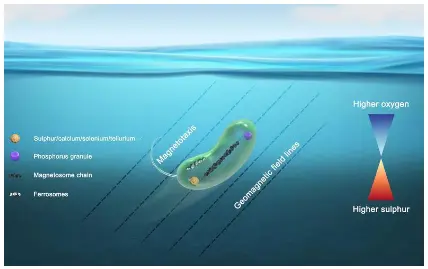
Key Findings of the Study
- Monsoon Fluctuations
- Sediment sample analysis revealed fluctuations in monsoon strength during the last Glacial Maximum-Holocene period, affecting weathering and sedimentation processes.
- Optimal Conditions for Magnetic Fossil Growth
- The study proposes that giant magneto fossil formation does not necessarily require warming events; instead, it depends on an optimal balance of iron, organic carbon, and suboxic conditions.
- Information Encoded by Magnetofossils
- Magnetofossils preserve information about past environmental conditions, such as nutrient availability, oxygen levels, and water stratification in ancient aquatic environments.
- Rivers like the Godavari, Mahanadi, Ganga-Brahmaputra, Cauvery, and Penner, discharging into the Bay of Bengal, contributed to magneto fossil formation by supplying nutrient-rich sediment and reactive iron.
Understanding Magnetofossils
- Definition and Origin
- "Magneto Fossils" are fossilized remains of magnetotactic bacteria containing magnetic minerals, which leave traces in geological records.
- Magnetotactic bacteria are prokaryotic organisms discovered by Salvatore Bellini in 1963, aligning themselves along the earth’s magnetic field to navigate to areas with optimal oxygen concentration.
- These bacteria produce tiny crystals of magnetite or greigite within their cells to aid navigation in changing oxygen levels and sediment saturation in water bodies, arranged in a chain configuration through magnetotaxis.
- Rare Giant Magneto Fossils
- Giant magneto fossils, less common than conventional magnetic fossils, are likely produced by eukaryotes rather than bacteria.
- Most giant magnetofossils are found in sediments dating to the Paleocene-Eocene Thermal Maximum and the Middle Eocene Climatic Optimum, known for global temperature rises.
- Recent discoveries in the Bay of Bengal challenge the assumption that magnetofossils only form during extreme warming periods, with findings dating back approximately 50,000 years.
Implications of the Study
- The study's findings suggest a reevaluation of the conditions necessary for giant magneto fossil formation, highlighting the role of local environmental factors beyond global temperature fluctuations.
|
UPSC Previous Year Questions Prelims (2019) Q. The word ‘Denisovan’ is sometimes mentioned in media in reference to (a) fossils of a kind of dinosaurs Ans: (b) |
Source: TH
Microplastics
In News: Scientists have recently developed a polymer derived from plants that undergoes biodegradation at the microplastic scale.

Understanding Microplastics
- Microplastics, defined as plastic particles less than five millimeters in diameter, stem from both commercial product development and the deterioration of larger plastic items.
- They differ from "macroplastics," such as plastic bottles and bags, in terms of size and origin.
- Microplastics are found in various products, including cosmetics, synthetic clothing, plastic bags, and bottles, many of which end up as environmental waste.
- Comprising carbon and hydrogen atoms bound in polymer chains, microplastics often contain additional chemicals like phthalates, PBDEs, and TBBPA.
- There are two main categories of microplastics: primary and secondary.
- Primary microplastics are intentionally produced tiny particles (e.g., from cosmetics) and microfibers shed from textiles like clothing and fishing nets.
- Secondary microplastics result from the fragmentation of larger plastic items, often due to exposure to environmental factors like sunlight and ocean waves.
Environmental Impacts
- Microplastics, like their larger counterparts, accumulate and persist in the environment without readily breaking down.
- In the ocean, microplastics can absorb and transport harmful chemicals, posing ingestion risks to marine organisms. Standard water treatment methods are insufficient in removing all microplastic traces.
- Additionally, microplastics contribute to air pollution, present in dust and airborne fibrous particles.
Source: NDTV
National Medical Commission
In News: Recently, the Supreme Court issued a directive to the National Medical Commission (NMC), instructing it to provide comprehensive details regarding the stipend status of medical colleges in all States.
Overview of the National Medical Commission (NMC)
- Established through the National Medical Commission Act of 2019, effective from September 25, 2020, replacing the Medical Council of India (MCI).
- Headquarters located in New Delhi, India.
- Functions include:
- Setting policies and regulations to uphold high standards in medical education.
- Regulating medical institutions, professionals, and research.
- Assessing healthcare requirements and infrastructure in the country.
- Ensuring compliance with guidelines by State Medical Councils.
- Appellate jurisdiction over decisions made by Autonomous Boards.
- Promoting ethical conduct in the medical profession and during patient care.
- Framing guidelines for determining fees in private medical institutions.
- Comprised of 33 members, including a Chairperson (exclusive to medical professionals), 10 ex-officio members, and 22 part-time members.
- Medical Advisory Council serves as a platform for States or Union Territories to express concerns and advises on maintaining minimum standards of medical education.
- Consists of four autonomous boards:
- Under-Graduate Medical Education Board
- Post-Graduate Medical Education Board
- Medical Assessment and Rating Board
- Ethics and Medical Registration Board
Source: LL
Agni-Prime Missile
In News: The Strategic Forces Command (SFC) in collaboration with the Defence Research and Development Organisation (DRDO) conducted a successful flight test of the new-generation ballistic missile, Agni-Prime, from the Dr APJ Abdul Kalam Island situated off the coast of Odisha.

Understanding Agni-Prime Missile
- The Agni-Prime Missile represents a new generation of nuclear-capable variants within the Agni missile series, featuring advanced capabilities.
- It is a two-stage canisterised missile with a range spanning from 1,000 to 2,000 km.
- Compared to previous Agni models, Agni-Prime is notably lighter, weighing at least 50% less than the Agni 3 missile, and incorporates upgraded guidance and propulsion systems.
- It boasts enhanced transportability via road and rail and can be stored for extended periods, streamlining preparation and launch processes significantly.
- The missile employs a cold launch mechanism and supports salvo firing mode for increased operational versatility.
Understanding Ballistic Missiles
- Ballistic missiles are projectiles launched directly into the upper layers of the Earth's atmosphere, capable of traversing beyond into space where the warhead separates from the missile and descends towards a predetermined target.
- These self-guided weapons systems are propelled by rockets and have the capacity to carry either conventional or nuclear payloads.
- They are deployable from various platforms including aircraft, ships, submarines, and land-based installations.
Source: TH
S.A.R.A.H.
In News: The World Health Organization (WHO) recently unveiled the launch of S.A.R.A.H., a prototype of a digital health promoter.
Understanding S.A.R.A.H. (Smart AI Resource Assistant for Health)
- S.A.R.A.H. is a prototype of a digital health promoter developed by the World Health Organization (WHO), equipped with an enhanced empathetic response driven by generative artificial intelligence (AI).
- Its primary objective is to offer an additional tool for individuals to access their rights to health, regardless of their location.
Key Features
- Trained to provide information on various health topics, encompassing healthy habits and mental health.
- Capable of assisting individuals in understanding risk factors associated with major causes of death worldwide, such as cancer and heart disease.
- Provides access to up-to-date information on tobacco cessation, physical activity, nutritious diets, and stress management, among other health-related topics.
- Offers engagement round-the-clock in eight languages across multiple devices, empowering users with knowledge and support.
- Utilizes generative AI technology, enabling real-time responses that are more accurate compared to pre-set algorithms or scripts.
Source: FE
Paira Cropping System
In News: The Paira cropping system, a distinctive conservation agricultural practice, has witnessed a decline in recent years, primarily attributed to the impacts of climate change.
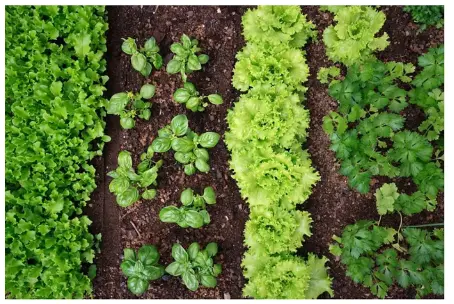
Understanding the Paira Cropping System
- The utera/paira cropping method is commonly practiced in Bihar, Eastern Uttar Pradesh, West Bengal, Chhattisgarh, and Odisha.
- It involves a relay sowing technique where lentil, lathyrus, urdbean, or mungbean seeds are broadcast in the standing rice crop approximately two weeks before rice harvest.
- Agronomic interventions such as tillage, weeding, irrigation, and fertilizer application are not feasible in this system. However, the productivity of pulses depends on the rice variety.
Advantages of Paira Cropping
- Utilizes soil moisture effectively during rice harvesting, which might otherwise be lost rapidly.
- Experimental evidence suggests that paira cropping yields more lentils compared to post-rice crop tillage planting.
- Efficient utilization of resources for sustainable crop intensification and increased land productivity.
Understanding Relay Cropping
- Relay cropping is a method of multiple cropping wherein one crop is seeded into the standing second crop well before the second crop's harvest.
- It addresses various conflicts such as inefficient resource utilization, controversies in sowing timing, fertilizer application, and soil degradation.
Source: DTE
Derivatives
In News: The Reserve Bank of India (RBI) has postponed the implementation of regulations concerning exchange-traded currency derivatives by one month, leading traders to liquidate their positions.
Understanding Derivatives
- Derivatives are financial contracts whose value is contingent upon an underlying asset, group of assets, or benchmark, and are associated with their own set of risks.
- Common types of derivatives include futures contracts, forwards, options, and swaps, with their prices being influenced by fluctuations in the underlying asset.
- Underlying assets for derivatives typically include stocks, bonds, commodities, currencies, interest rates, and market indexes.
- Derivatives serve various purposes such as speculation, hedging, and gaining access to additional assets or markets.
- The primary objective behind engaging in derivative contracts is to capitalize on potential profits by speculating on the future value of the underlying asset.
- Derivatives can be categorized into two main types: exchange-traded derivatives, subject to standardized terms and conditions and traded on stock exchanges, and over-the-counter derivatives, traded between private counter-parties without a formal intermediary.
Understanding Exchange Traded Currency Derivatives (ETCDs)
- Exchange Traded Currency Derivatives (ETCDs) are financial instruments enabling traders and investors to speculate on the future price movements of various currency pairs.
- These derivatives are traded on exchanges, and their value is determined by the underlying currency exchange rate.
Common Types of Derivatives
- Futures Contracts: Agreements between two parties to buy or sell an asset at a predetermined price on a specific future date. Underlying assets can include commodities, financial instruments, or indices.
- Options Contracts: Provide the holder the right, but not the obligation, to buy (call option) or sell (put option) an underlying asset at a specified price (strike price) on or before a predetermined expiration date.
- Swaps: Agreements between two parties to exchange cash flows based on specific financial variables, such as interest rate swaps, currency swaps, and commodity swaps. Swaps are often used to manage various risks or modify debt obligations.
- Forwards: Similar to futures contracts but are not standardized or traded on exchanges. Customized agreements between two parties to buy or sell an asset at a predetermined price on a future date.
Source: TOI
#BBD0E0 »
Implement precautionary principle in chemical industry regulation
In News: The upcoming report and database from the Norwegian #PlastChem project will unveil a shocking reality: a whopping 16,000 chemicals are employed in the production of polymers and plastics.
Understanding the Ubiquitous Presence of Plastics
- Widespread Presence and Impact: Plastics have become integral to daily life, utilized in various forms ranging from food packaging to medical devices. However, their omnipresence raises concerns due to their adverse effects on both human health and the environment.
- Chemical Hazards: The production of plastics involves the use of numerous chemicals, a significant portion of which are hazardous. These chemicals can leach into the environment, contaminating air, water, soil, and ultimately entering the food chain, posing risks to human health and ecosystems.
- Lack of Regulation: Despite growing awareness of the hazards posed by plastics, regulatory oversight remains limited in many regions, including India. The plastic industry operates with minimal regulation, allowing for the widespread use of potentially harmful chemicals without adequate scrutiny or accountability.
Challenges in Regulatory Oversight
- Information Gap: Unlike industries such as food, cosmetics, and pharmaceuticals, where rigorous testing and regulation are mandated, the plastic sector lacks transparency regarding the chemical composition of products and their associated health risks.
- Historical Precedents: Past incidents, such as the case of Dupont's use of hazardous chemicals in Teflon production despite knowing the associated health risks, highlight the urgent need for stricter regulations to prioritize public safety over corporate interests.
India's Position on Global Plastics Treaty
- Resistance to Binding Targets: India's stance opposes the inclusion of binding targets on plastic production in the Global Plastics Treaty, instead emphasizing addressing pollution without enforceable caps.
- Differentiated Responsibilities: India advocates for considering varying levels of economic development in addressing environmental issues, highlighting the principle of common but differentiated responsibilities.
- Viability of Alternatives: India proposes evaluating substitutes based on technical and economic feasibility. Additionally, India emphasizes the importance of national design standards and redefining single-use products in accordance with local contexts.
Proposed Solutions and Path Forward
- Comprehensive Regulation: India should adopt a comprehensive regulatory approach grounded in independent scientific research, moving away from reliance on voluntary disclosures within the plastic industry.
- Transparency and Traceability: Developing and contributing to global inventories of plastic chemicals and polymers can promote transparency and traceability, aiding in better regulation and management of plastic pollution.
- Clear Definitions and Hazard Criteria: Establishing clear definitions and harmonized hazard criteria, alongside regulations grounded in the precautionary principle, can enhance the effectiveness of regulatory measures.
- Chemical Prioritization: Grouping chemicals based on structure simplifies prioritization for regulation and helps prevent the substitution of hazardous chemicals with similar counterparts.
- Industry Accountability: Enhancing transparency and accountability measures for the petrochemical industry, including mandatory disclosure of all chemicals used in production, is crucial to ensuring public safety and environmental protection.
Conclusion
The #PlastChem project highlights the urgent need for reevaluating India's approach to chemical regulation and environmental sustainability. By implementing proactive measures and prioritizing public health and environmental preservation, India can mitigate the harmful impacts of plastic pollution and pave the way for a more sustainable future.
Source: DH
Share the article
Get Latest Updates on Offers, Event dates, and free Mentorship sessions.

Get in touch with our Expert Academic Counsellors 👋
FAQs
UPSC Daily Current Affairs focuses on learning current events on a daily basis. An aspirant needs to study regular and updated information about current events, news, and relevant topics that are important for UPSC aspirants. It covers national and international affairs, government policies, socio-economic issues, science and technology advancements, and more.
UPSC Daily Current Affairs provides aspirants with a concise and comprehensive overview of the latest happenings and developments across various fields. It helps aspirants stay updated with current affairs and provides them with valuable insights and analysis, which are essential for answering questions in the UPSC examinations. It enhances their knowledge, analytical skills, and ability to connect current affairs with the UPSC syllabus.
UPSC Daily Current Affairs covers a wide range of topics, including politics, economics, science and technology, environment, social issues, governance, international relations, and more. It offers news summaries, in-depth analyses, editorials, opinion pieces, and relevant study materials. It also provides practice questions and quizzes to help aspirants test their understanding of current affairs.
Edukemy's UPSC Daily Current Affairs can be accessed through:
- UPSC Daily Current Affairs can be accessed through Current Affairs tab at the top of the Main Page of Edukemy.
- Edukemy Mobile app: The Daily Current Affairs can also be access through Edukemy Mobile App.
- Social media: Follow Edukemy’s official social media accounts or pages that provide UPSC Daily Current Affairs updates, including Facebook, Twitter, or Telegram channels.

